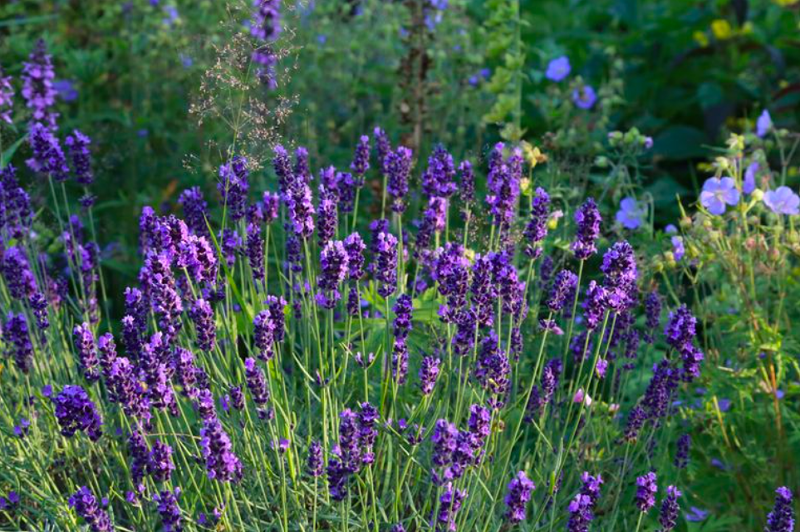
Achieve planting success with lavender in your garden
We plant lavender in vast quantities in our gardens every year. Partly because we love it, but also because it dies and needs replacing. For those struggling to establish lavender in their gardens the sight of old, woody lavenders that seem to thrive on neglect and last for years is frustrating. We fed, we nurtured, we watered and still it died!
Choose the right variety
Some lavenders seem to come through the winter unscathed, others keel over at the first frost. This is influenced by the growing conditions (read on) but also by type. The French lavenders, cultivars of Lavandula stoechas and the like are just not as hardy as the English and Dutch lavenders.The English lavenders, Lavandula angustifolia cultivars, have narrow leaves that have the characteristic aroma of lavender. Go for name cultivars: ‘Hidcote’, ‘Munstead’ or ‘Imperial Gem’ that have been raised from cuttings and grown in a cool, airy environment.
For taller lavenders look to the Dutch lavenders, varieties of Lavandula x intermedia such as ‘Vera’ and ‘Grosso’. These are equally hardy and some would argue that they are the most fragrant and long-blooming. For something different try the long blooming Lavandula x intermedia ‘Edelweiss’: the bees love it.
Lavenders for pots
The French Lavenders and other more tender types still have their place. They are earlier into bloom, free flowering and make great subjects for pots and containers. In sheltered gardens against a sunny wall they may thrive in the border for years. The foliage has a different smell: a distinct fragrance of menthol and eucalyptus.They bloom for weeks and are worth growing even if they do not survive for next year. They are more rewarding than many seasonal bedding plants and cost little more.
For more tips on growing lavender, read Andy McIndoe's latest blog on Learning with Experts

